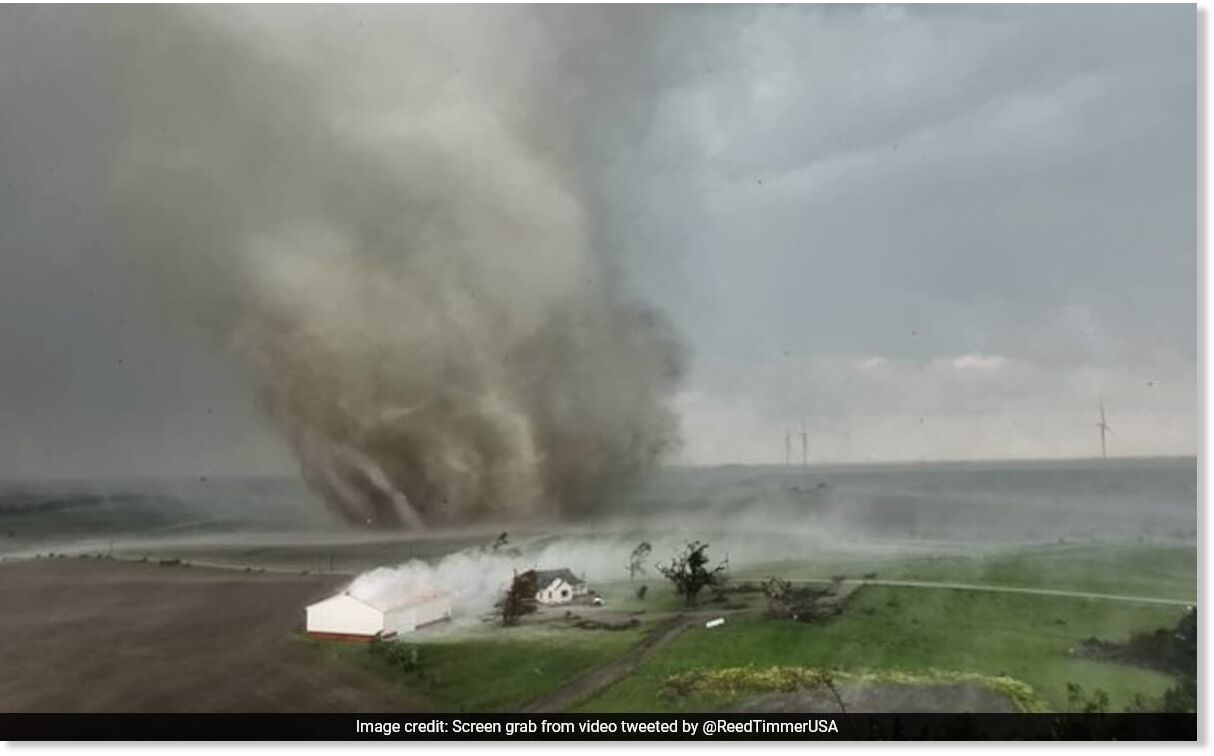Historical Context
Greenfield ia tornado – The Greenfield, Iowa tornado of May 1947 was a devastating F5 tornado that struck the town of Greenfield, Iowa, and the surrounding areas. The tornado killed 11 people, injured 50, and caused widespread damage.
The tornado touched down near the town of Adair, Iowa, at 6:30 p.m. on May 22, 1947. It then traveled east-northeast, passing through the town of Greenfield at 6:45 p.m. The tornado reached its peak intensity as it passed through Greenfield, with winds estimated at 250 mph. The tornado then continued east-northeast, dissipating near the town of Stuart, Iowa, at 7:00 p.m.
Impact
The Greenfield tornado caused widespread damage to the town of Greenfield and the surrounding areas. The tornado destroyed or damaged over 500 homes and businesses, and left thousands of people homeless. The tornado also caused extensive damage to the town’s infrastructure, including the power grid, water system, and roads.
The tornado had a significant impact on the community of Greenfield. The town was forced to rebuild from scratch, and it took years for the community to recover from the devastation. The tornado also led to changes in the way that tornadoes are forecasted and tracked. The National Weather Service established a network of tornado warning sirens in the wake of the Greenfield tornado, and it also began to issue more timely and accurate tornado warnings.
Lessons Learned
The Greenfield tornado taught us a number of important lessons about tornadoes. First, we learned that tornadoes can be extremely powerful and destructive. Second, we learned that it is important to have a plan in place for what to do in the event of a tornado warning. Third, we learned that it is important to listen to the advice of weather forecasters and emergency officials.
The Greenfield tornado was a tragedy, but it also helped us to learn more about tornadoes and how to protect ourselves from them. The lessons that we learned from the Greenfield tornado have helped to save lives and property in the years since.
Scientific Analysis: Greenfield Ia Tornado

The meteorological conditions that led to the formation of the Greenfield tornado were complex and varied. A combination of factors, including high wind shear, instability, and moisture, came together to create the perfect storm. The tornado formed as a result of a supercell thunderstorm, which is a type of thunderstorm that is characterized by its rotating updraft. The updraft in a supercell thunderstorm is so strong that it can reach speeds of up to 100 miles per hour. This strong updraft creates a low-pressure area at the surface, which draws in more air. The inflowing air then rises, cools, and condenses, releasing latent heat. This latent heat fuels the thunderstorm and helps to keep it going.
The Greenfield tornado was an F4 tornado, which means that it had winds of up to 200 miles per hour. The tornado traveled for over 20 miles, causing widespread damage. The tornado destroyed homes, businesses, and infrastructure. It also caused several injuries and deaths.
Characteristics and Behavior of the Tornado
The Greenfield tornado was a classic example of a supercell tornado. It had a well-defined funnel cloud, and it traveled in a relatively straight line. The tornado was also very strong, and it caused significant damage. The tornado’s winds were so strong that they were able to lift cars and houses off the ground. The tornado also produced a lot of hail, which caused additional damage.
Damage Caused by the Tornado and Implications for Future Preparedness, Greenfield ia tornado
The Greenfield tornado caused widespread damage. The tornado destroyed homes, businesses, and infrastructure. It also caused several injuries and deaths. The damage caused by the tornado is a reminder of the importance of being prepared for tornadoes. There are a number of things that people can do to prepare for tornadoes, including:
- Having a plan in place for what to do in the event of a tornado warning.
- Building a safe room or shelter in your home.
- Having an emergency kit that includes food, water, and first-aid supplies.
- Staying informed about the weather forecast and being aware of the risk of tornadoes in your area.
Community Resilience

In the aftermath of the Greenfield tornado, the community demonstrated remarkable resilience in the face of adversity. The shared experience of the disaster forged a sense of unity and determination among the residents, who rallied together to rebuild their lives and their community.
Individual stories of resilience abound. One resident, whose home was completely destroyed, refused to give up. With the help of friends and neighbors, he salvaged what he could from the wreckage and began the long process of rebuilding. Another resident, who lost her job in the tornado, started her own small business to support herself and her family.
Factors Contributing to Community Resilience
Several factors contributed to the community’s ability to rebuild and thrive after the tornado. These included:
- Strong social networks: The community had a strong network of social connections, which provided support and assistance to those in need.
- Local leadership: Local leaders played a vital role in coordinating relief efforts and providing guidance to the community.
- Access to resources: The community had access to resources, such as financial assistance, building materials, and counseling services, which helped them to rebuild their homes and lives.
- Sense of place: The community had a strong sense of place and belonging, which motivated them to rebuild and reclaim their community.